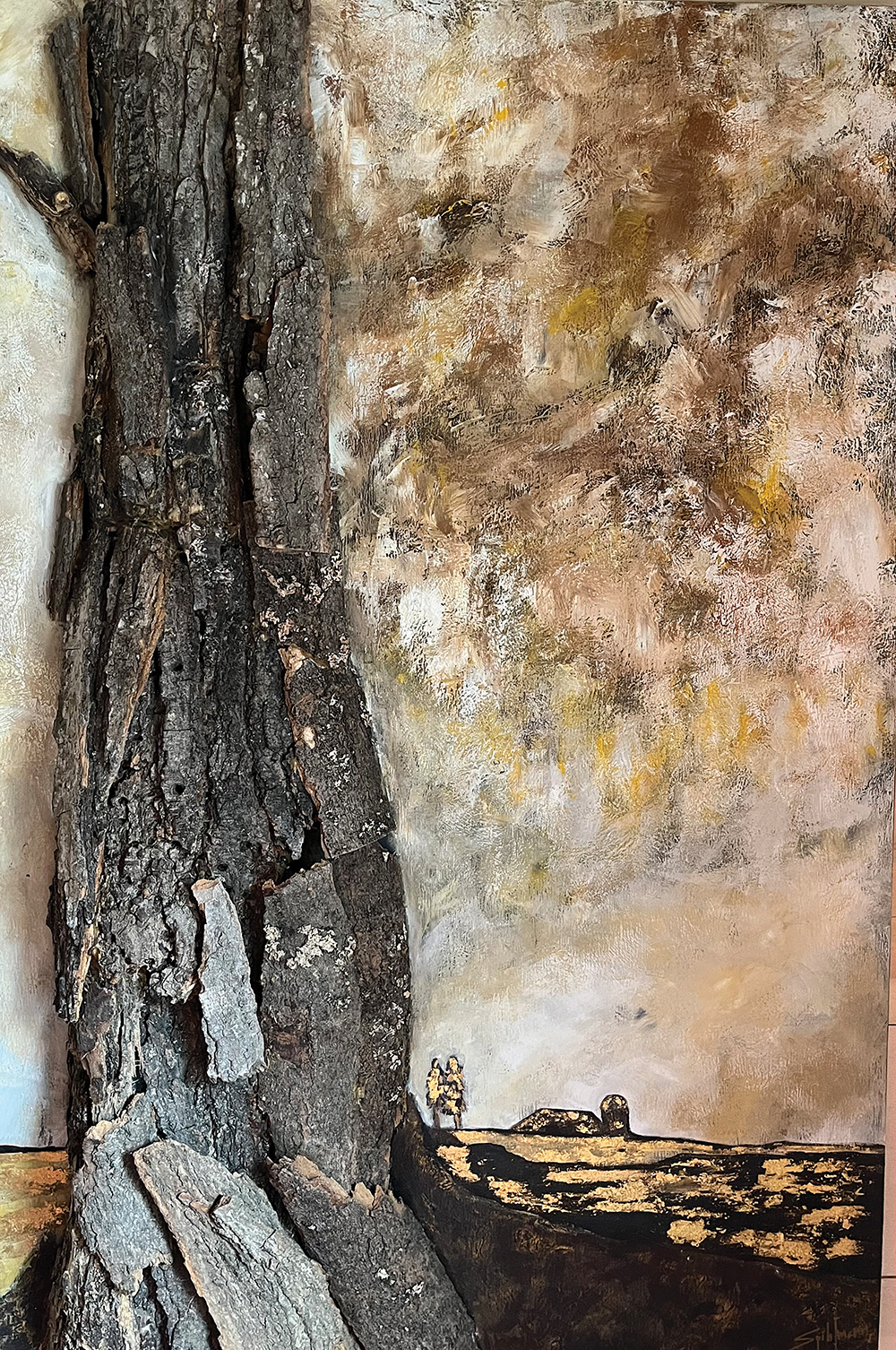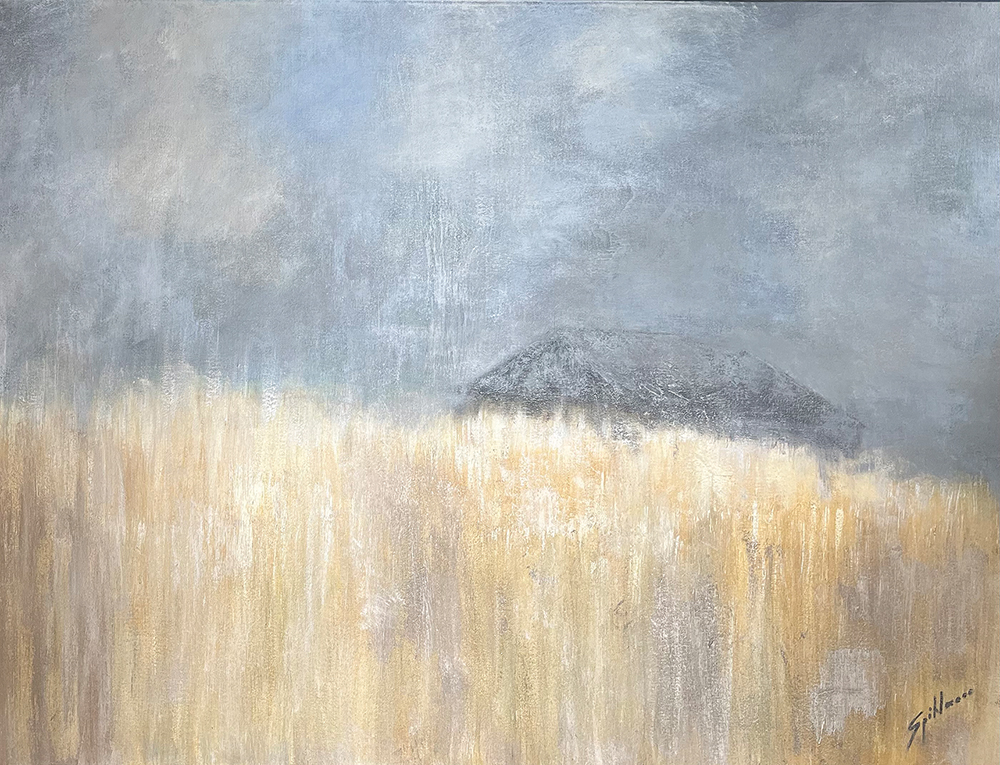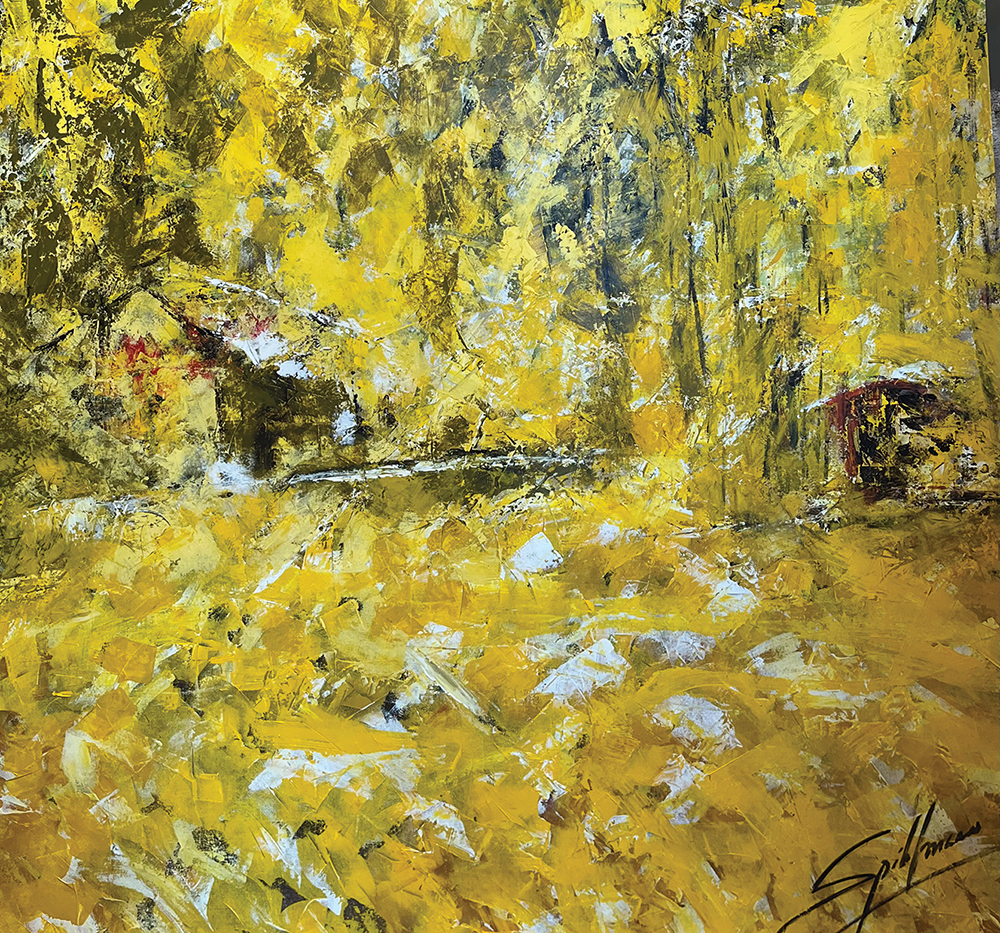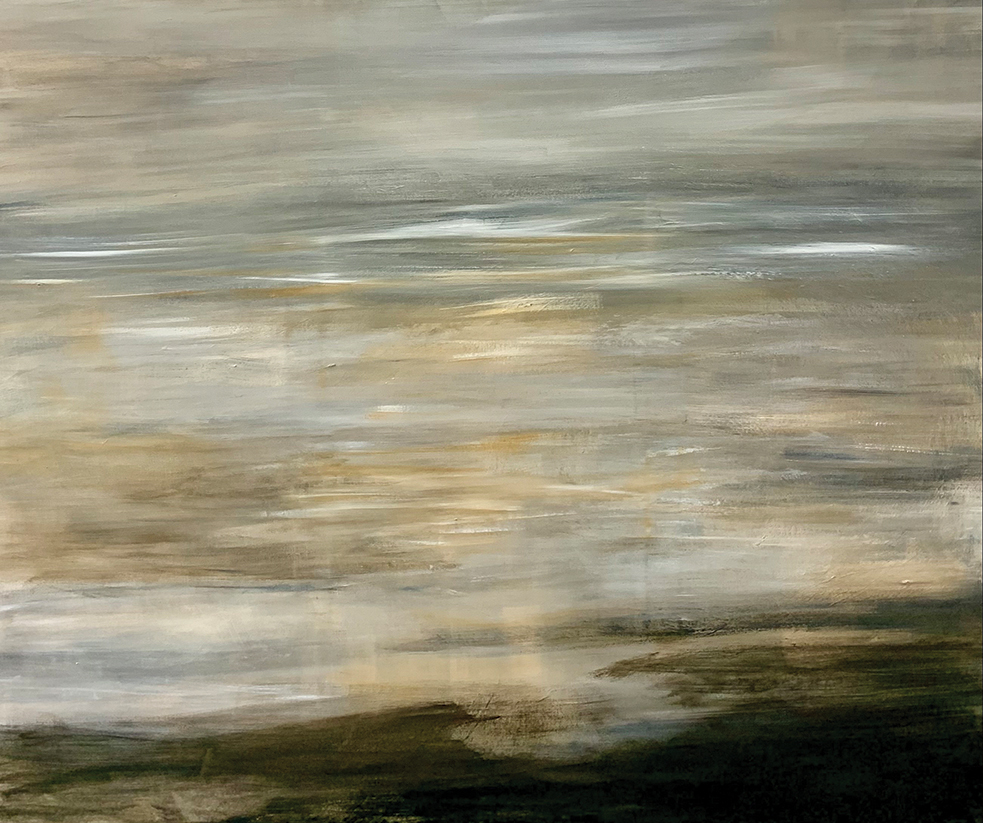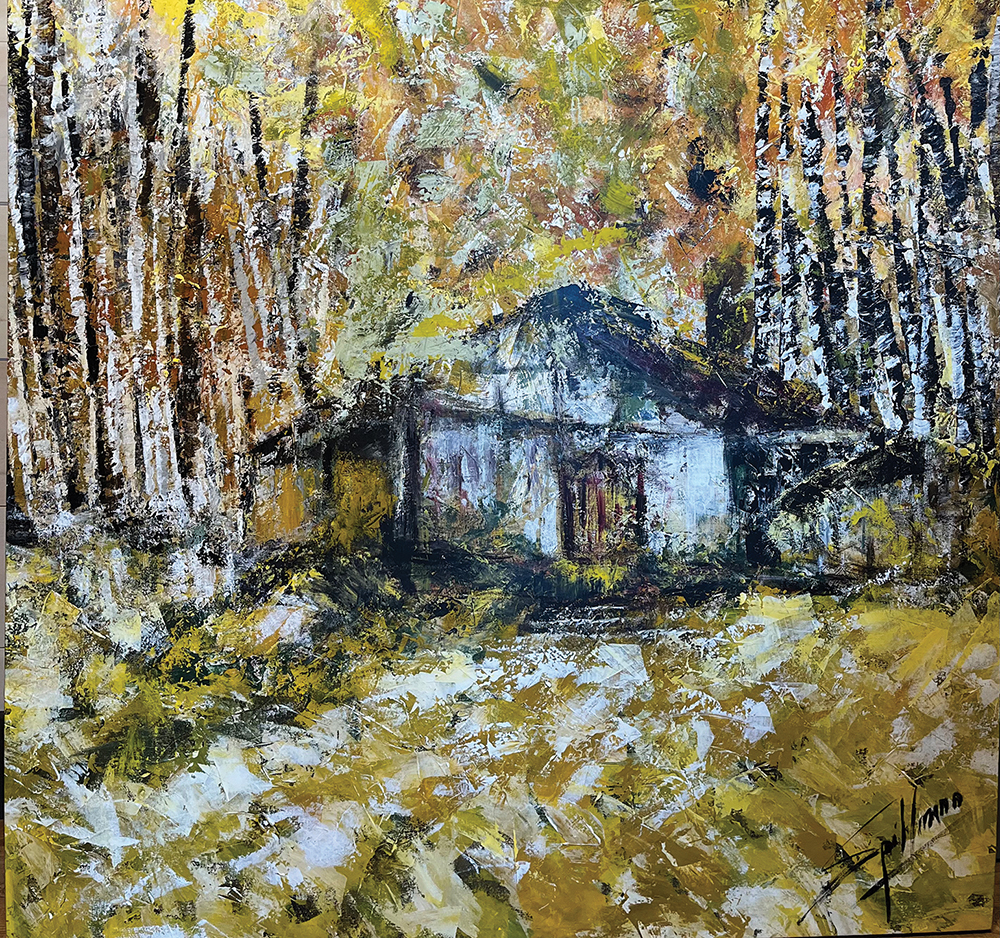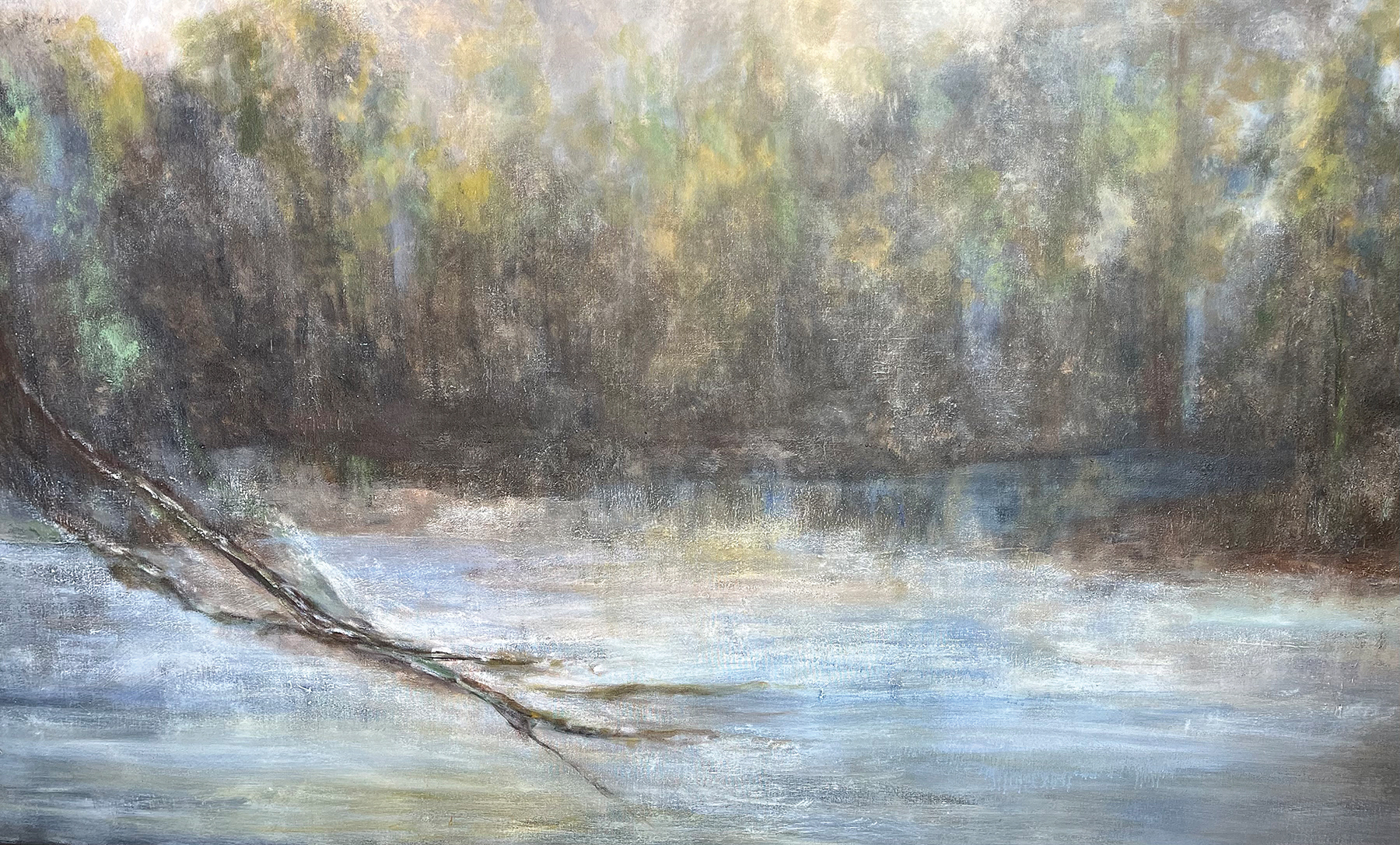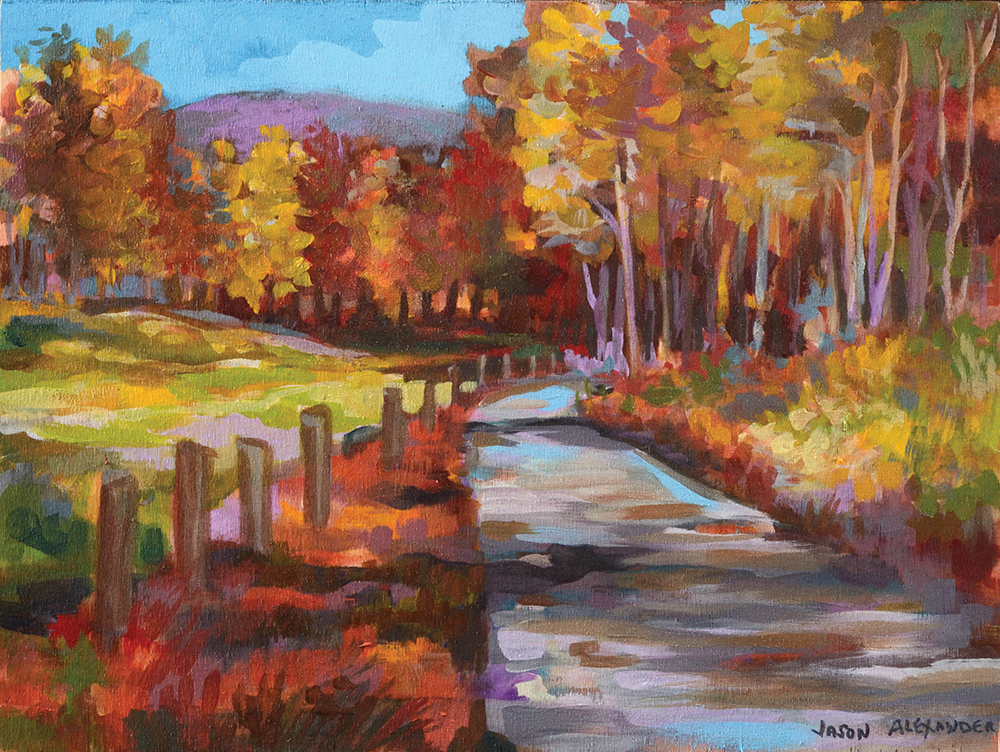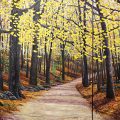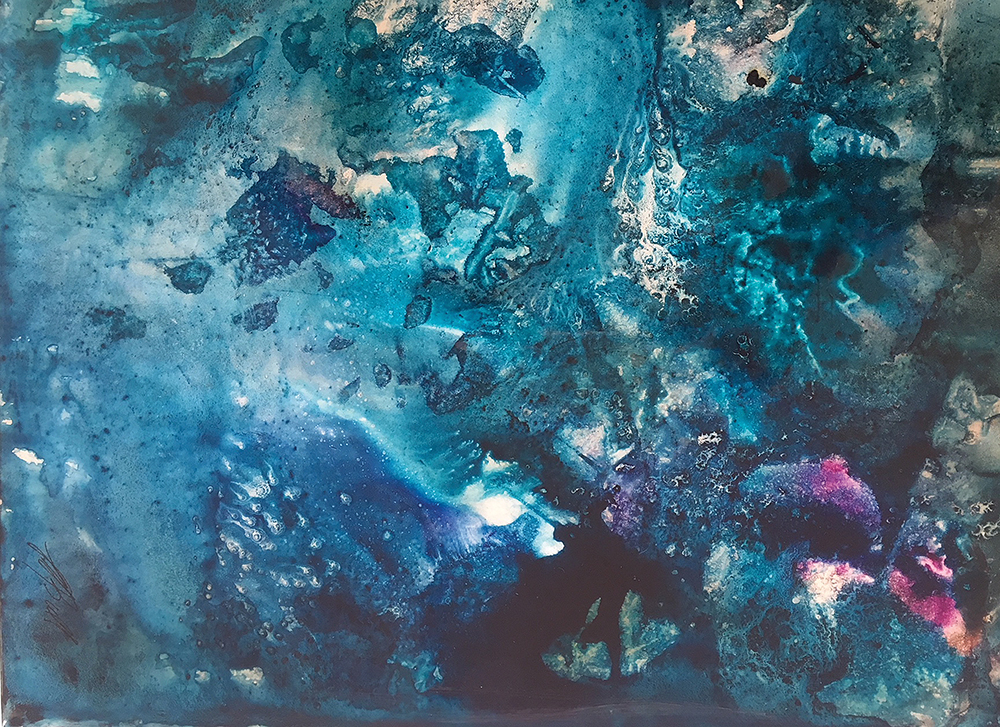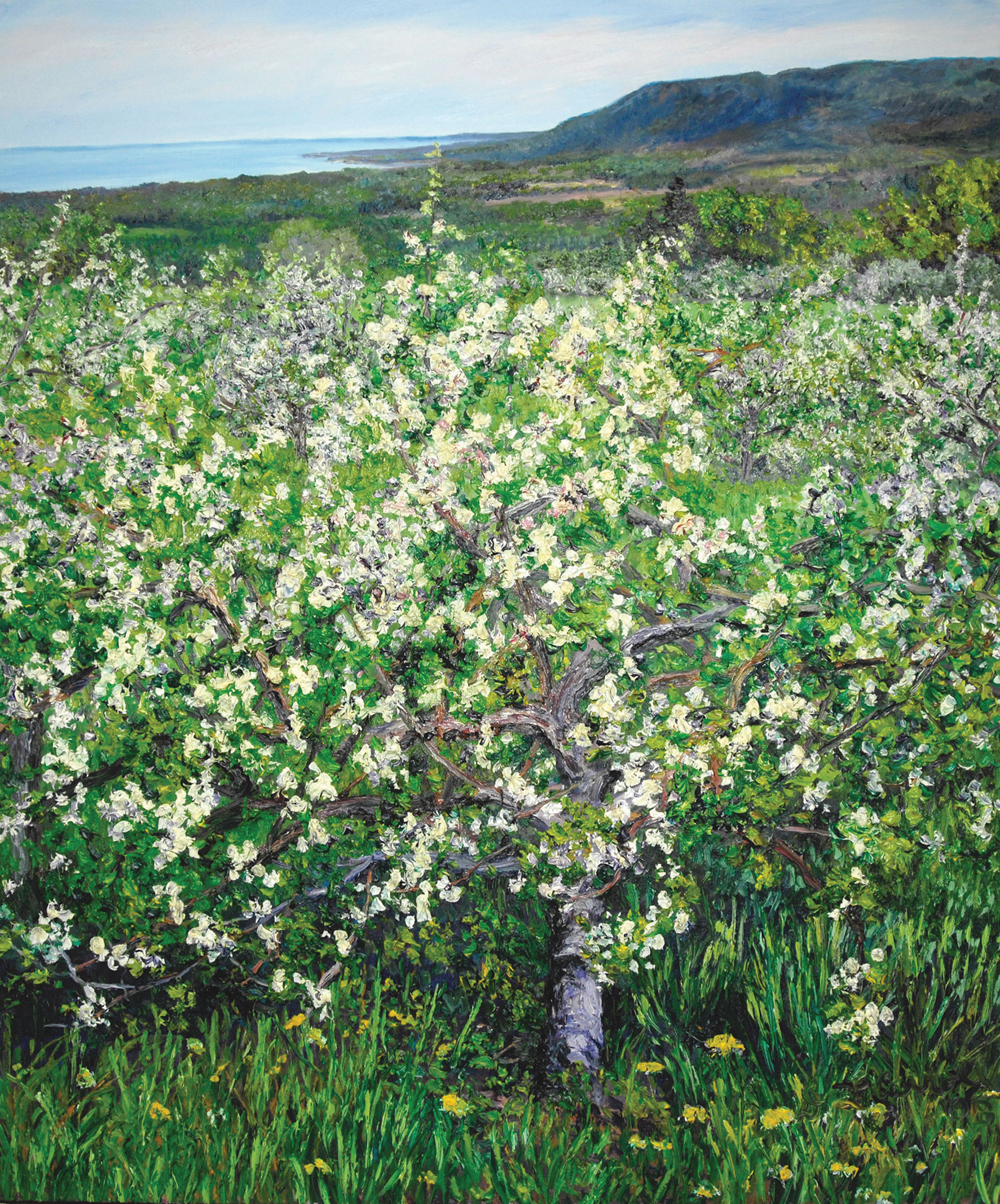A spirited command to her then-husband launched Cecilia Spihlmann’s art career from desperation to profound serenity, with moody, introspective landscapes to match.
By Laurie Stephens // Art by Cecilia Spihlmann // Photography By Cecilia Spihlmann
The landscape painter in Cecilia Spihlmann was born out of desperation.
Trained in Peru as a graphic artist, she didn’t pick up a paintbrush until her 20s when she was travelling with her then-spouse whose job took him to different countries every three months. Living in a series of hotels—sometimes in places where it wasn’t safe for her to go out—took its toll.
“I remember that’s when I said to him, ‘Please go to a store and buy me a brush, my five basic colours, and a canvas, that’s all I need’,” she recalls. “And I had never painted before! That was the creative side of me that was yelling, screaming to do something.”
She started painting everywhere she went, rolling up her canvases in a little tube. She would ask the hotel room cleaners not to clean on the days when she was painting and then she would unhook the closet door from its hinges to use it as a frame for her work. Once she returned home to Lima, she went to workshops, was mentored by established artists and started showing her work. Her paintings at that time were abstract and heavily influenced by her graphic design background—lots of obvious shapes and hard edges.
Fast forward 30 years and a lot has changed. She now lives amongst the beauty of the Niagara Escarpment. And, all of the rigid form of her past work is gone, replaced by soft lines and rich colours, reflecting both serenity and stability.
In her work studio—a tiny room with natural light streaming through large windows—Spihlmann casts a critical eye on her latest creation: a large acrylic painting that is almost the size of a closet door turned sideways.
Called The Pond, the scene is brooding yet soothing—a mix of grey-greens and browns and full of shadows that border the still, murky water. She steps forward and adds a dash of pale yellow here and there, building reflections in the pond’s surface and subtly providing the viewer with more detail of a large limb of a fallen tree.
Spihlmann says the inspiration for this painting is the beauty and diversity of the local natural scenery. It’s not a real place; it exists only in her imagination.
“I try to paint realistically so many times, but I get so frustrated because you are never able to match or equal nature,” she says. “So, I just leave it to the person to interpret it, to just go into the painting and feel whatever they want to feel, see whatever they want to see.
“For me, when I am painting, I am just imagining.”
A self-described “bohemian,” Spihlmann is warm and engaging—just like her art—and quick to laugh. She describes her work as “mellow,” yet she is anything but. Her eyes flash and she becomes animated when talking about her work.
She left Peru for good at age 37 with three children in tow, settling in Oakville in 2004 before moving to Collingwood in 2012. She rented a studio for a time at Collingwood’s Tremont Studios.
However, when the opportunity arose to live in a spectacular log home at the base of a ski club, she decided it was the perfect place to set up her work studio. Her love of deep, rich colours stems from her heritage. She grew to appreciate the beautiful shades of blue while growing up in Lima on the South Pacific coast. But she also visited the Andes Mountains further inland where she took notice of the brown and red hues of the earth.
“The ground changes colours there. And it’s like the people—very warm. I think that’s why I tend to work with a very soft palette. I do have contrast, but in very subtle ways.”

“Creativity is something that’s in us and unless we discover it, we don’t know that we have it.”
Spihlman is busy preparing for a solo show coming up at Collingwood’s The Press Room Gallery in November. Her studio is crammed full of works in progress, and she pulls out a painting of a grove of birch trees in autumn, called The Red Cottage. Splashes of yellow dominate, but upon closer inspection, the white bark of the birch trees emerges, and the indistinct outline of the cottage is visible through the leaves.
Another painting, aptly called Fields of Gold, depicts an expanse of wheat against a stormy grey sky that shows hints of sun poking through. Soft lines of a barn’s roof pull the viewer in for a closer look.
“That’s what I meant by subtle,” she says. “It invites you to imagine, it invites you to feel whatever you want to feel, see whatever you want to see. You choose how to see it. This is not an exact place that I know. It’s just what in my mind I remember and maybe how I want it to be for me.”
Spihlmann says she never does a draft of a painting, nor does she work from photographs. When ready to start a new piece, she typically sits in front of a blank canvas and lets her mood dictate what she creates.
Colour is usually her first decision. If she is craving sun and light, she may begin by applying yellows and reds. If she has embraced a gloomy, rainy day, she may produce something that is peaceful and still, like The Pond.
Her art extends beyond acrylic paintings. She also creates mixed media pieces that better reflect her Peruvian background through her use of South American textiles, clay, gold leaf and other materials.
Her home is full of three-dimensional pieces, including a dining room light of warped, winding wood suspended from wires, and a long wooden table centrepiece decorated with feathers and pinecones.
Another piece of wall art depicts a scene of a mother brown bear and her cub walking through the woods. Mounted on a wooden board, the bears are painted clay while the “woods” are natural sticks and branches. The sky is a rich copper-brown, accentuating the natural grain and hue of the board.
All of her art in her home and work studio mirrors the serene state of her current life, a fact not lost on her as she reflects on the initial source of her inspiration to paint. “Creativity is something that’s in us and unless we discover it, we don’t know that we have it,” she says.
“I think you always start out of necessity and that brings out your creativity—in everything. You don’t even realize you are needing something until you’re lacking something, and we have to give ourselves a chance to let it out.”






